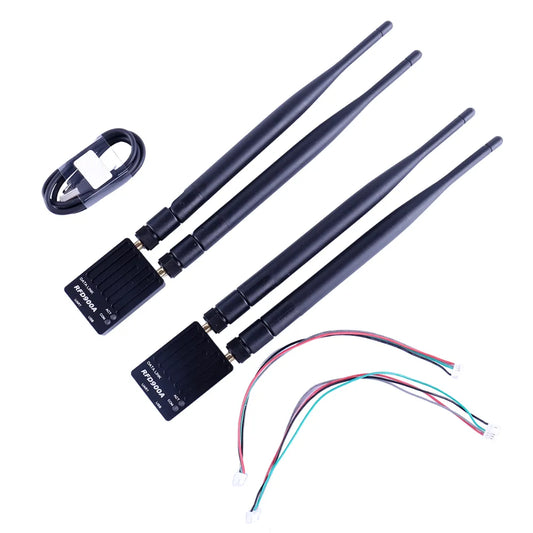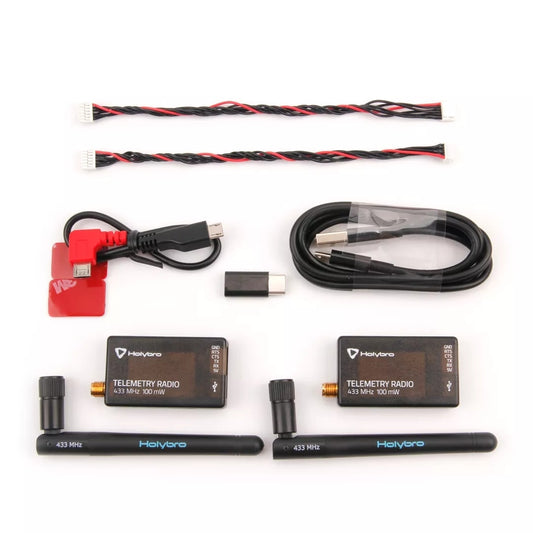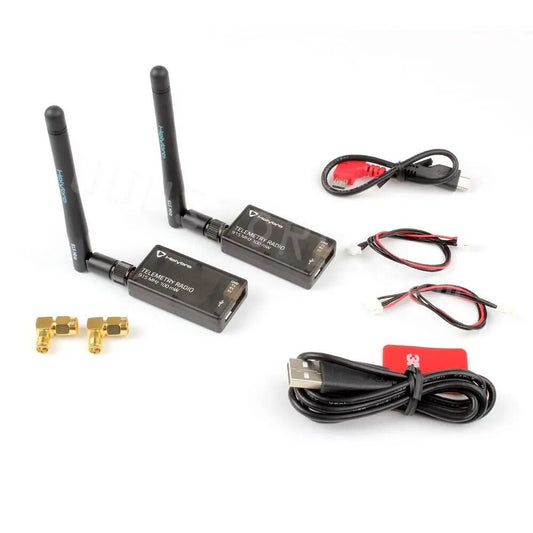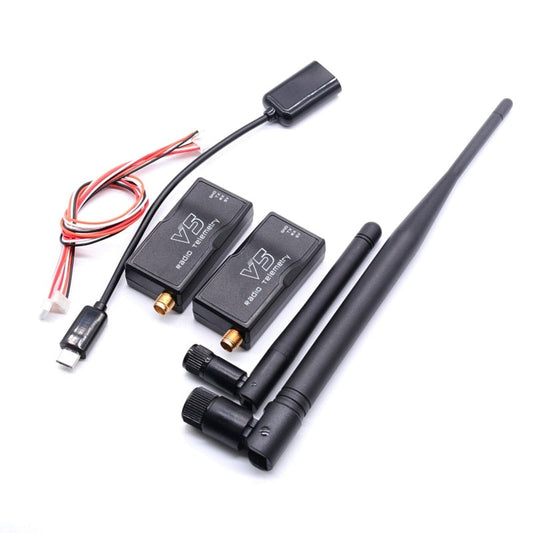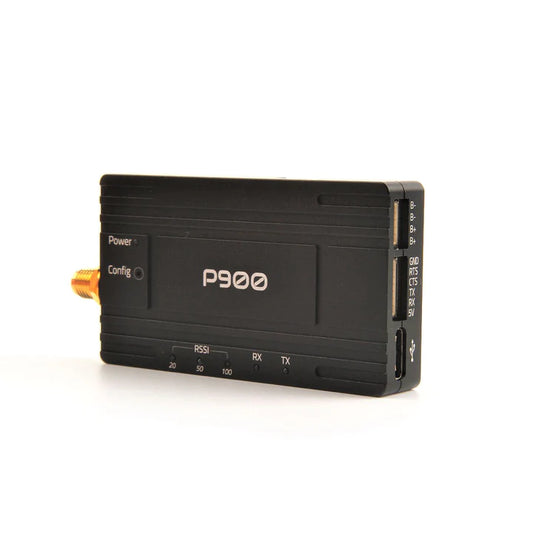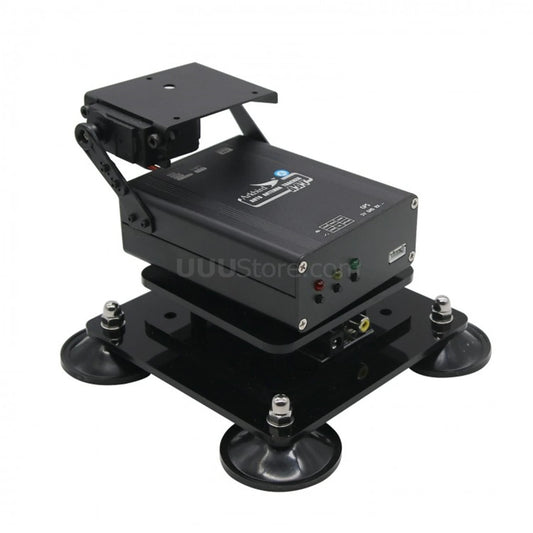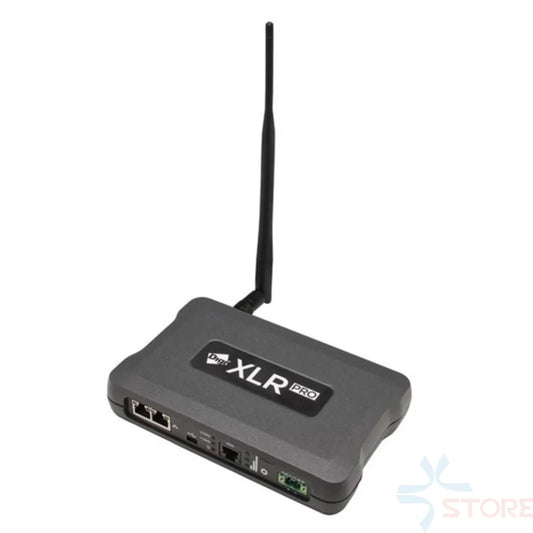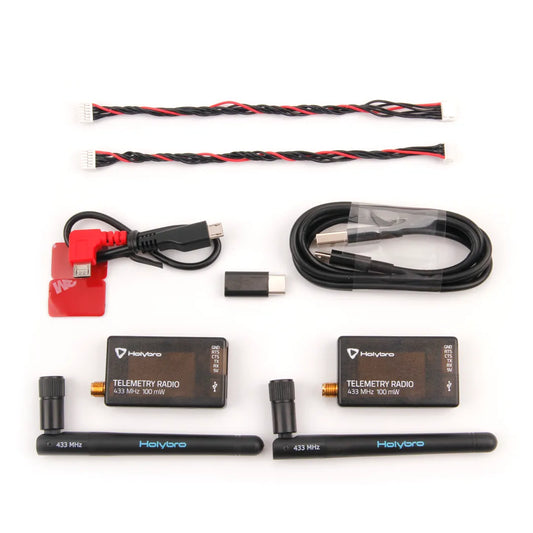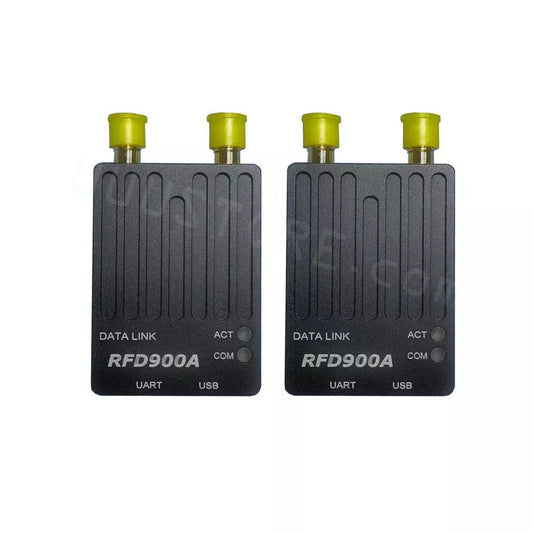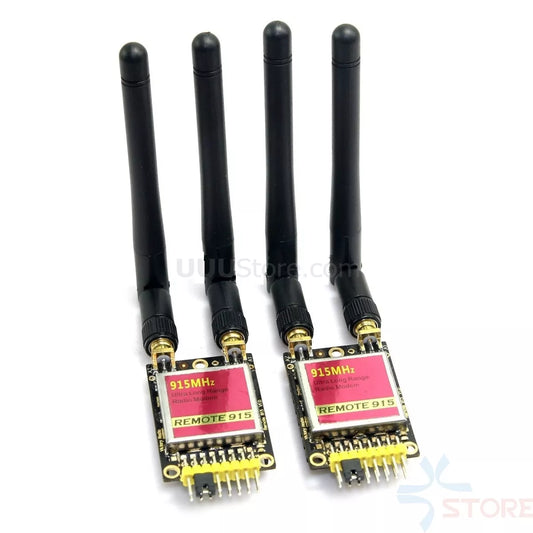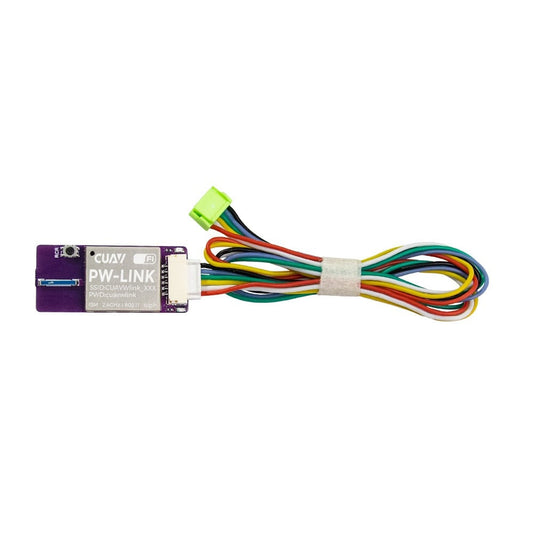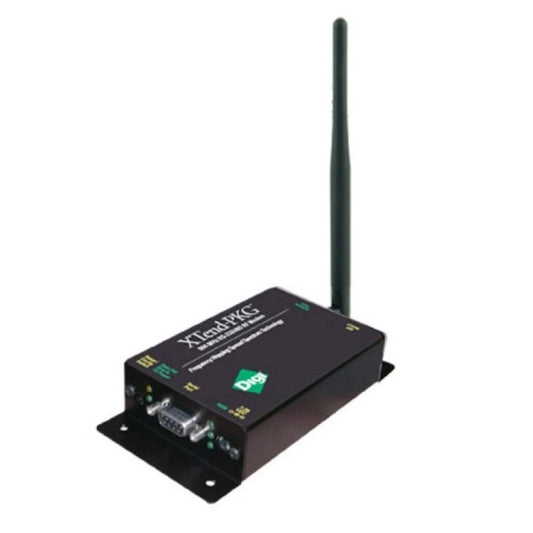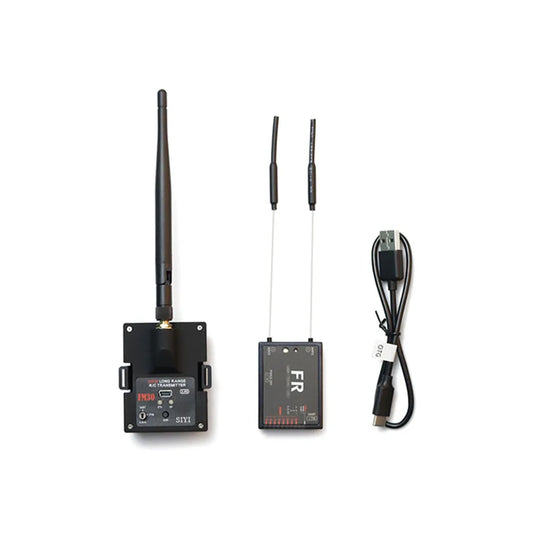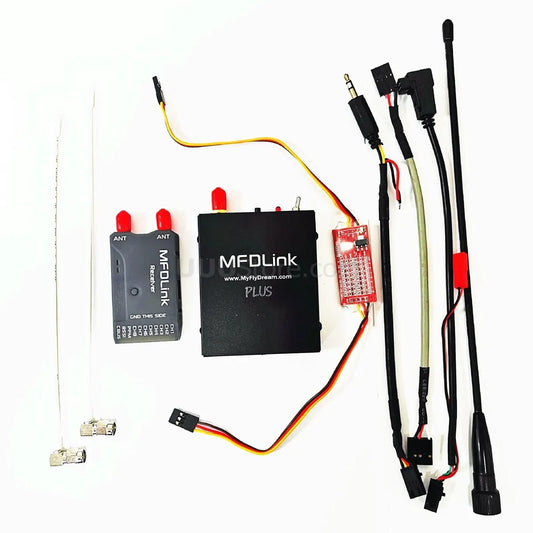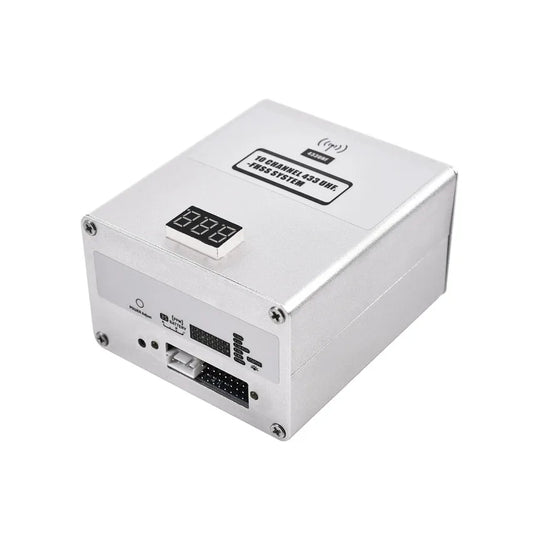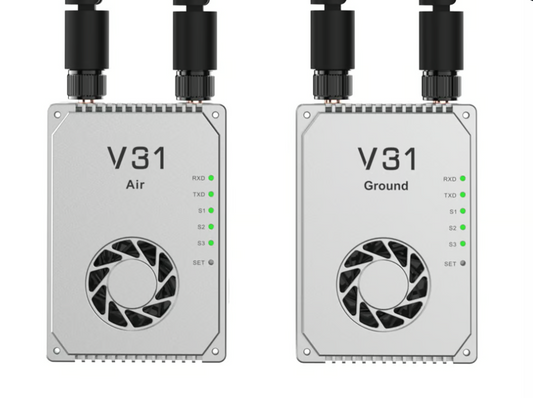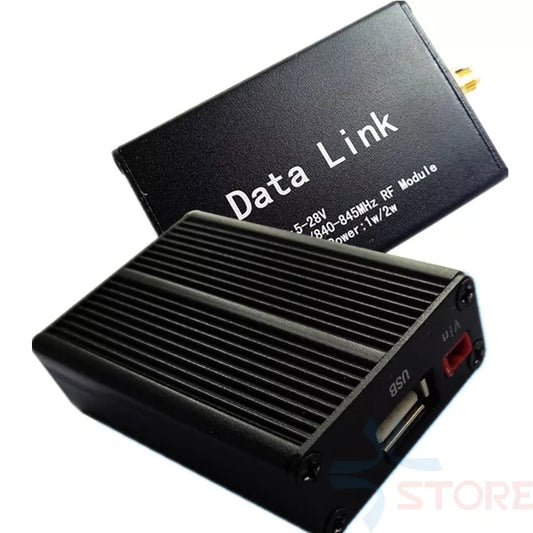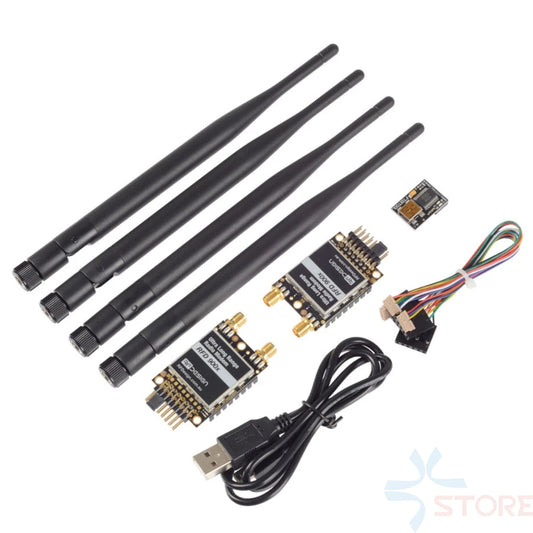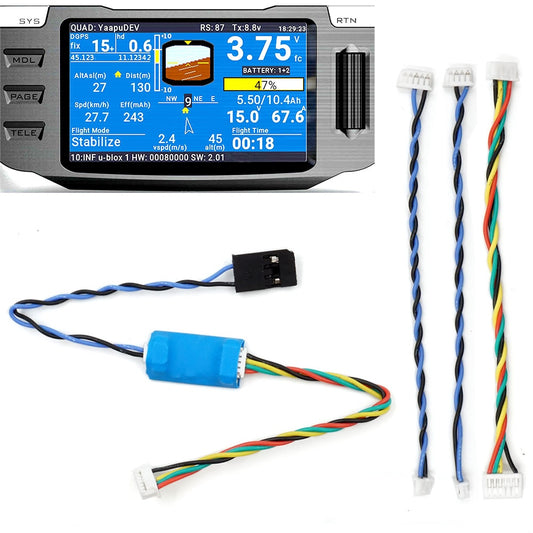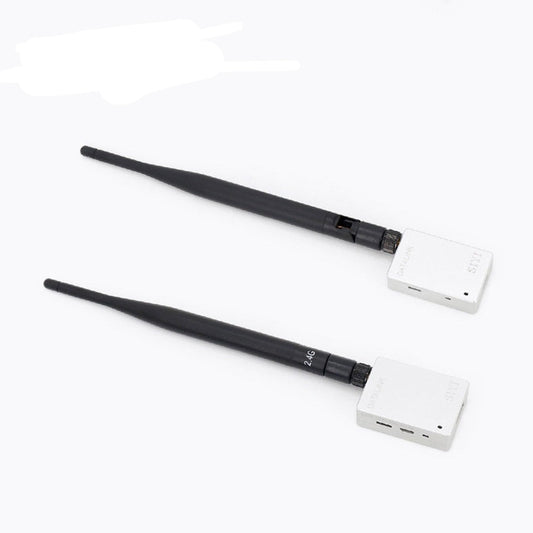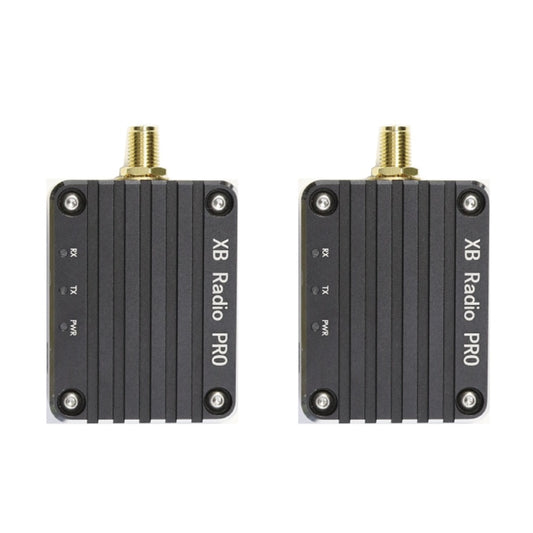-
RFD900A 915Mhz 3DR Radio Telemetry Modem Module - UAV 40KM Ultra Long Range Data Link Transmission for PIX APM RC Drone Airplane
Regular price From $88.47 USDRegular priceUnit price per -
Holybro SiK Telemetry Radio V3 - 100mW 500mW 433MH 915MHz Open-source SiK firmware Plug-n-play for Pixhawk Standard Flight Controllers
Regular price $81.73 USDRegular priceUnit price per -
Holybro SiK Telemetry Radio V3 - 100mW 433MH 915MHz Open-source SiK firmware Plug-n-play for Pixhawk Standard Flight Controller
Regular price $83.24 USDRegular priceUnit price per -
3DR Radio V5 Telemetry - 433Mhz 915Mhz 100MW/500MW Air and Ground Data Transmit Module with OTG cables for APM 2.8 /Pixhawk 2.4.8
Regular price From $15.25 USDRegular priceUnit price per -
Holybro P900 P840 Microhard Telemetry Radio - 60KM 100KM Long Range Telemetry
Regular price From $316.00 USDRegular priceUnit price per -
Arkbird AAT Auto Antenna Tracker Gimbal w/Ground and Airborne Module Extend Range FPV 1.2/ 5.8G Ground System
Regular price From $25.00 USDRegular priceUnit price per -
DIGI XLR PRO XL9-UA Industrial 900 MHz Radio - Long-Range modem for serial and Ethernet devices
Regular price $1,362.78 USDRegular priceUnit price per -
Holybro SiK Telemetry Radio V3 - 100mW 433MH 915MHz Open-source SiK firmware Plug-n-play for Pixhawk Standard Flight Controllers
Regular price $76.70 USDRegular priceUnit price per -
RadioLink PRM-03 Real-time OSD Telemetry Module for Voltage Monitoring (1S~6S LiPo, AT10II/AT9 Compatible)
Regular price $26.00 USDRegular priceUnit price per -
Over 40km RFD900A Telemetry Bundle - Ultra Long Range Telemetry Radio Modem for APM Pixhawk Flight Controller
Regular price $165.00 USDRegular priceUnit price per -
40km Long Range RDF900 915Mhz Radio Modem Remote 900 Data Diversity Telemetry for APM Pixhawk Flight Controller
Regular price From $113.70 USDRegular priceUnit price per -
CUAV PW-LINK Wifi Telemetry Module - With Internal Antenna Data Transmission PIX FPV PIXHACK PIXHAWK Flight Controller
Regular price $41.00 USDRegular priceUnit price per -
ZeroOne OneDLink P900/P840 Data & Video Link for Drone Telemetry, 60km, up to 276/345kbps
Regular price $0.00 USDRegular priceUnit price per -
ZeroOne OneWLink WiFi DataLink 2.4G UDP Telemetry Module, 200m Range, APM/PX4, 5V
Regular price $29.00 USDRegular priceUnit price per -
ZeroOne OneVDLink R30 Dual-Band 1.4/2.4GHz UAV Data & Video Link, Telemetry, 30km 30Mbps <25ms, SBUS UART ETH, Mesh 32
Regular price From $635.00 USDRegular priceUnit price per -
CHINOWING V21 RC Data Link, 800MHz/1.4GHz/2.4GHz, 15–17km LOS Video & Telemetry, Dual S-BUS, TTL/RS232
Regular price $1,800.00 USDRegular priceUnit price per -
CHINOWING V31 Pro Video Telemetry Data RC Link, 800MHz/1.4GHz, 5km/50km Range, LAN, SBUS, TTL/RS232
Regular price From $3,600.00 USDRegular priceUnit price per -
CHINOWING M1 Mesh Video Link, LTE 2x2 MIMO, 15-20km LOS, 100MBPS, 600MHz/1.4GHz, Ethernet & Serial Gateway
Regular price $4,399.00 USDRegular priceUnit price per -
CHINOWING VX10 Video Radio Telemetry RC Data Link, 600MHz/1.4GHz, 100MBPS, 15–20km LOS, 2x2 MIMO, Ethernet/Serial
Regular price $2,400.00 USDRegular priceUnit price per -
CHINOWING VB31 Backpack Radio (Video+Data+RC Link), 5 km/20 km Range, 800MHz/1.4GHz, LAN, SBUS, <300 ms
Regular price $3,899.00 USDRegular priceUnit price per -
CHINOWING VM21 Mesh Network Video Radio Telemetry RC Data Link, 10km, 800MHz/1.4GHz/2.4GHz, 20ms Video
Regular price $2,699.00 USDRegular priceUnit price per -
CHINOWING D02 Radio Digital Transmitter, 30–60 km Link, TTL/RS232, P900/P840, 7.4–24 V, IP53, PC Config Tool
Regular price From $639.00 USDRegular priceUnit price per -
RadioLink PRM-01 Real-time Model Voltage Telemetry Module (1S–6S LiPo Compatible, AT10II/AT9S Compatible)
Regular price $26.00 USDRegular priceUnit price per -
VK R2 Data Link – 4G RTK Communication Module for UAV and GNSS Systems
Regular price From $299.00 USDRegular priceUnit price per -
CUAV SX Radio - 1W 900MHz 64KM Long Range Radio Telemetry for Pixhawk Pixhack Flight Controller
Regular price From $600.00 USDRegular priceUnit price per -
Digi International XTPH9B-PKI-RA-NA XTend PKG 900 MHz RS-232/485 radio modem RF MODEM
Regular price $586.14 USDRegular priceUnit price per -
30KM Long Range SIYI FM30 Radio Module - with Datalink Telemetry Bluetooth Receiver OpenTX Racing Drones 2.4G FM30 Transmitter
Regular price From $30.90 USDRegular priceUnit price per -
Long Range MFDLink Rlink 433Mhz 16CH 1W FPV UHF System Transmitter w/8 Channel Receiver TX+RX Set
Regular price From $37.70 USDRegular priceUnit price per -
Arkbird 5W 433MHz 10 Channel FHSS System UHF Module for Long Range Flight FPV Futaba WFLY APM PIX Autopilot
Regular price From $176.09 USDRegular priceUnit price per -
25W 433Mhz 10CH Arkbird UHF System - Long Range Remote Range Extension Support FPV PIX PX4 SN FAST Flight Control
Regular price From $417.87 USDRegular priceUnit price per -
CHINOWING V31 Video& Telemetry& RC Link - 5km, 20km, 30km, 50km, 80km, 150km Long Range 800MHz, 1.4GHz Frequency OFDM, MIMO 2w, 5w RF Power Integrated Solution Communication Links for UAV Drone UGV
Regular price From $2,929.00 USDRegular priceUnit price per -
P900/P400-840 1W Transmitter Receiver Telemetry - 30KM Long Range Distance Data Link Microhard For UAV APM Pixhawk PIXHACK
Regular price $479.96 USDRegular priceUnit price per -
RFDesign RFD 900X - Remote900X 915MHz Over 40km Ultra Long Range Telemetry Radio Modem with Diversity FTDI & Antenna for APM PIX
Regular price $466.17 USDRegular priceUnit price per -
FrSky Yaapu Telemetry Converter Cable - Pixhawk to Taranis X9D Plus QX7 Jumper T16 Smart Port R9 Slim+ R9 X8R XSR R9M X4R Receiver
Regular price $15.74 USDRegular priceUnit price per -
CUAV SY 2.4G Telemetry Module - Radio Data Transmitter for Pixhawk Pixhack Flight Controller
Regular price $192.64 USDRegular priceUnit price per -
CUAV XB Pro Radio Telemetry - 250mw 902~928MHz 6.5KM/15.5KM Distance Wireless PRO 900HP Integrates Signals Data Transmitter
Regular price $322.83 USDRegular priceUnit price per
